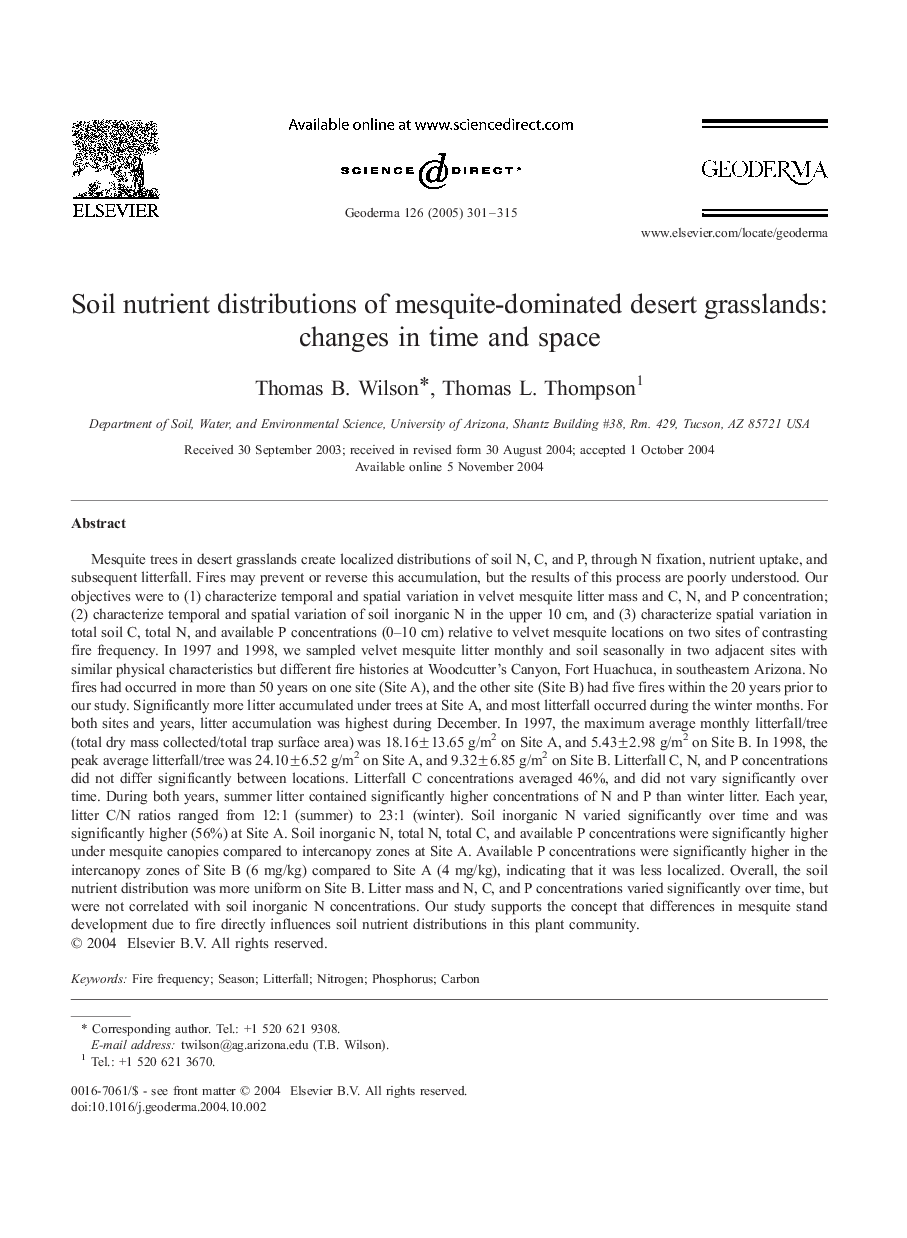| Article ID | Journal | Published Year | Pages | File Type |
|---|---|---|---|---|
| 9490592 | Geoderma | 2005 | 15 Pages |
Abstract
Mesquite trees in desert grasslands create localized distributions of soil N, C, and P, through N fixation, nutrient uptake, and subsequent litterfall. Fires may prevent or reverse this accumulation, but the results of this process are poorly understood. Our objectives were to (1) characterize temporal and spatial variation in velvet mesquite litter mass and C, N, and P concentration; (2) characterize temporal and spatial variation of soil inorganic N in the upper 10 cm, and (3) characterize spatial variation in total soil C, total N, and available P concentrations (0-10 cm) relative to velvet mesquite locations on two sites of contrasting fire frequency. In 1997 and 1998, we sampled velvet mesquite litter monthly and soil seasonally in two adjacent sites with similar physical characteristics but different fire histories at Woodcutter's Canyon, Fort Huachuca, in southeastern Arizona. No fires had occurred in more than 50 years on one site (Site A), and the other site (Site B) had five fires within the 20 years prior to our study. Significantly more litter accumulated under trees at Site A, and most litterfall occurred during the winter months. For both sites and years, litter accumulation was highest during December. In 1997, the maximum average monthly litterfall/tree (total dry mass collected/total trap surface area) was 18.16±13.65 g/m2 on Site A, and 5.43±2.98 g/m2 on Site B. In 1998, the peak average litterfall/tree was 24.10±6.52 g/m2 on Site A, and 9.32±6.85 g/m2 on Site B. Litterfall C, N, and P concentrations did not differ significantly between locations. Litterfall C concentrations averaged 46%, and did not vary significantly over time. During both years, summer litter contained significantly higher concentrations of N and P than winter litter. Each year, litter C/N ratios ranged from 12:1 (summer) to 23:1 (winter). Soil inorganic N varied significantly over time and was significantly higher (56%) at Site A. Soil inorganic N, total N, total C, and available P concentrations were significantly higher under mesquite canopies compared to intercanopy zones at Site A. Available P concentrations were significantly higher in the intercanopy zones of Site B (6 mg/kg) compared to Site A (4 mg/kg), indicating that it was less localized. Overall, the soil nutrient distribution was more uniform on Site B. Litter mass and N, C, and P concentrations varied significantly over time, but were not correlated with soil inorganic N concentrations. Our study supports the concept that differences in mesquite stand development due to fire directly influences soil nutrient distributions in this plant community.
Related Topics
Physical Sciences and Engineering
Earth and Planetary Sciences
Earth-Surface Processes
Authors
Thomas B. Wilson, Thomas L. Thompson,
